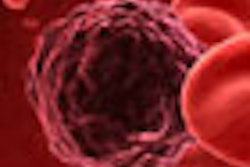A new study has confirmed the presence of four molecular classes of head and neck cancer (HNC), suggesting there may be an underlying connection between the molecular classes and observed genomic events, some of which affect known cancer genes (PLOS One, February 22, 2013).
A team led by researchers from the Universities of North Carolina (UNC) analyzed data from DNA microarrays to complete the study, which could pave the way for targeted therapies, according to the university.
The study is one of the largest ever published to document reproducible molecular tumor subtypes. Subtypes, such as those described, represent attractive models to understand and attack cancers for treatment and prognosis, the researchers said.
The team, composed of investigators from UNC and five other institutions, analyzed a set of nearly 140 head and neck squamous cell carcinoma (HNSCC) samples. By searching for recurrent patterns known as gene expression signatures, they were able to detect four gene expression subtypes. The subtypes are termed basal, mesenchymal, atypical, and classical based on similarities to established gene expression subtypes in other tumor types and expression patterns of specific genes.
By using the similarities found in the gene expression subtypes, the results of the study provide a connection to a range of well-established findings and additional insight into the disease.



















